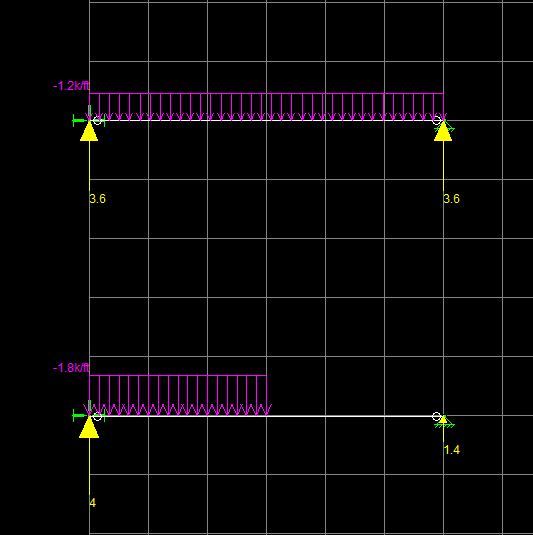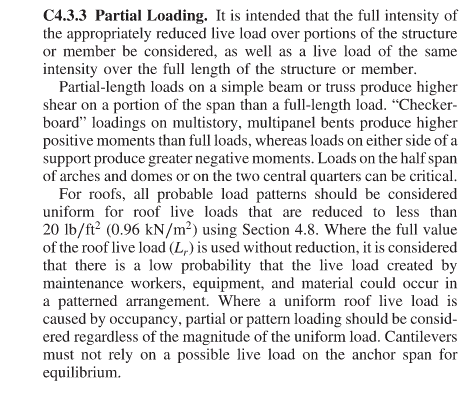haynewp - I see what you're getting at. I don't entirely agree, but you bring up an interesting point. Also, good observation about trib vs influence for roof live load reduction. That hadn't clicked before. The commentary is silent on why they left out a comparable KLL there.
If I understand you correctly, you're saying that, in essence, the lower bound connection capacity for a beam using live load reduction should be the non reduced live load multiplied by the threshold tributary area for beginning live load reduction applied as a uniform load to the end of the beam commensurate with the trib width - right? I can see the logic there. I may have a 6 foot beam there, but I could have a 3 foot beam. And that 3 foot beam would actually have a higher roof live load reaction than the 6 foot beam.
But here's where I disagree: you've created a double standard. The beam shear and the reaction are the same. So if you're using reduced live load for your member size you're designing the beam for a shear capacity of 3.6kips. But then you're forcing your connection to be 4kips. While it doesn't make sense at this scale, if you factor it up by an order of magnitude you could easily get yourself into a situation where you have a beam that works (maybe it has a shear capacity of 38 kips) but then your connection calculations won't work because the you can't get your 40kips of shear resistance at your connection.
The other issue is that I think you're giving the statistical variations too much credit. The listed live loads tend to be localized maximums - it's why we get to reduce them (or most of them, anyway) for large influence areas. Those loads are defined to create a statistical reliability. While I've started delving into this in more detail (and discovering it's not as widely discussed/understood as it should be), I'm far from an expert. But my hunch is that these statistical reductions leave us with a viable lower bound. That is, the beam shears are accurate or better and the beam moments remain further to the conservative side. That hunch is reinforced by the fact that most reducible loads are based on a 50 year reference period, and live load reduction has been around for about 50 years now (according to the ASCE 7-10 commentary and my own arithmetic). Have you heard of any beam shear failures resulting from live load reduction underestimating the loading concentrated to one end?



